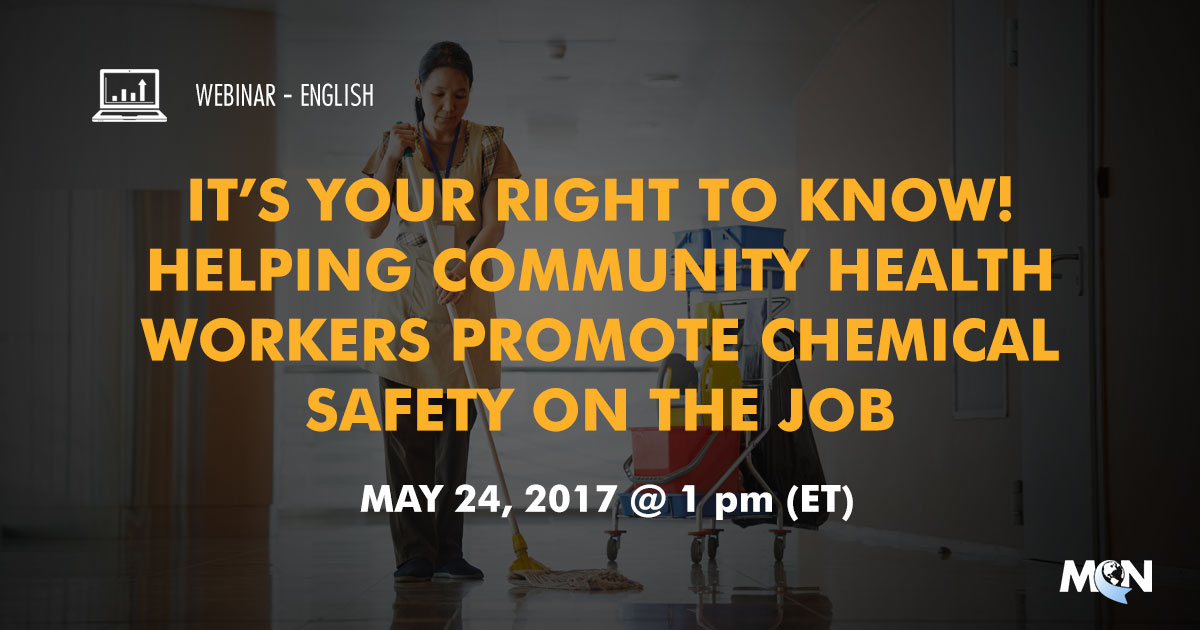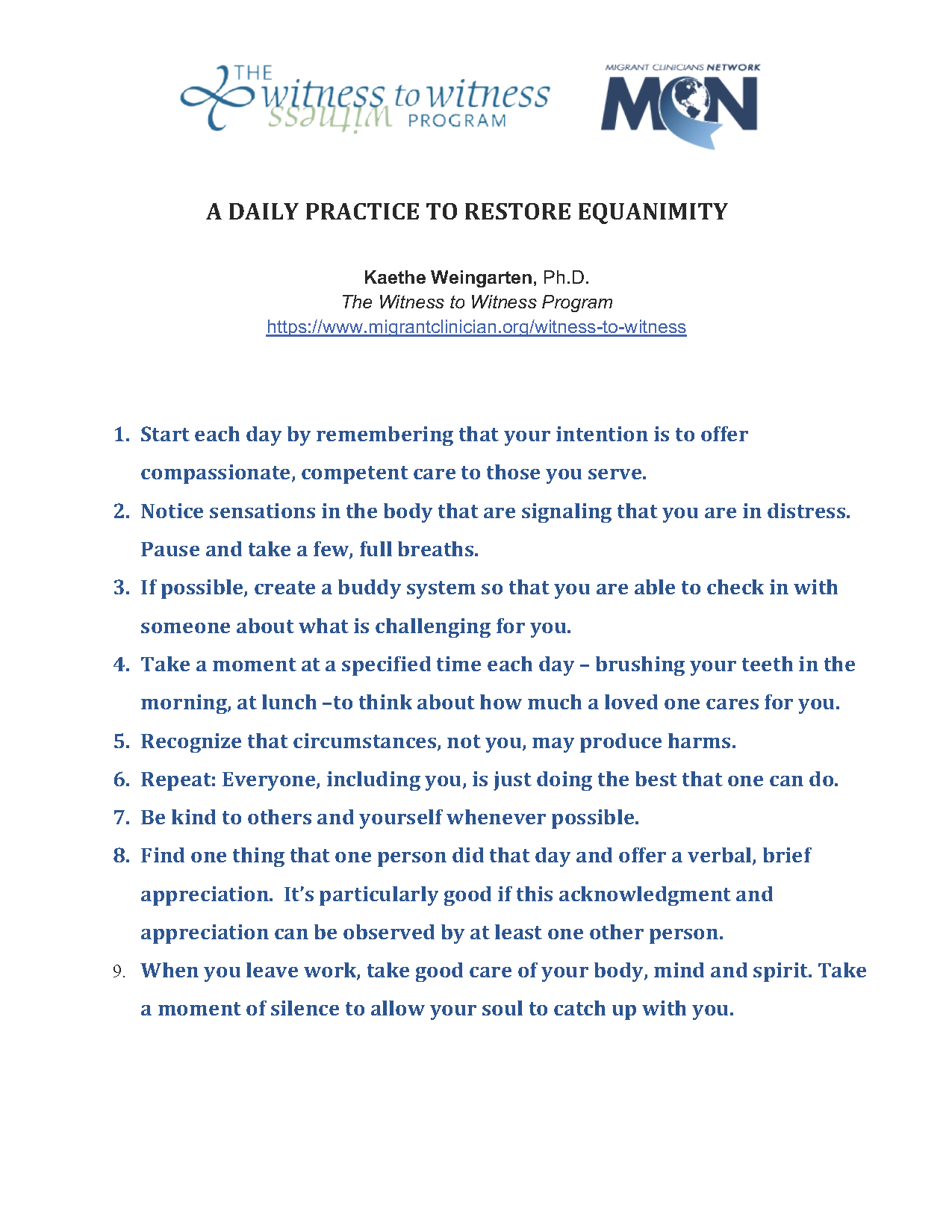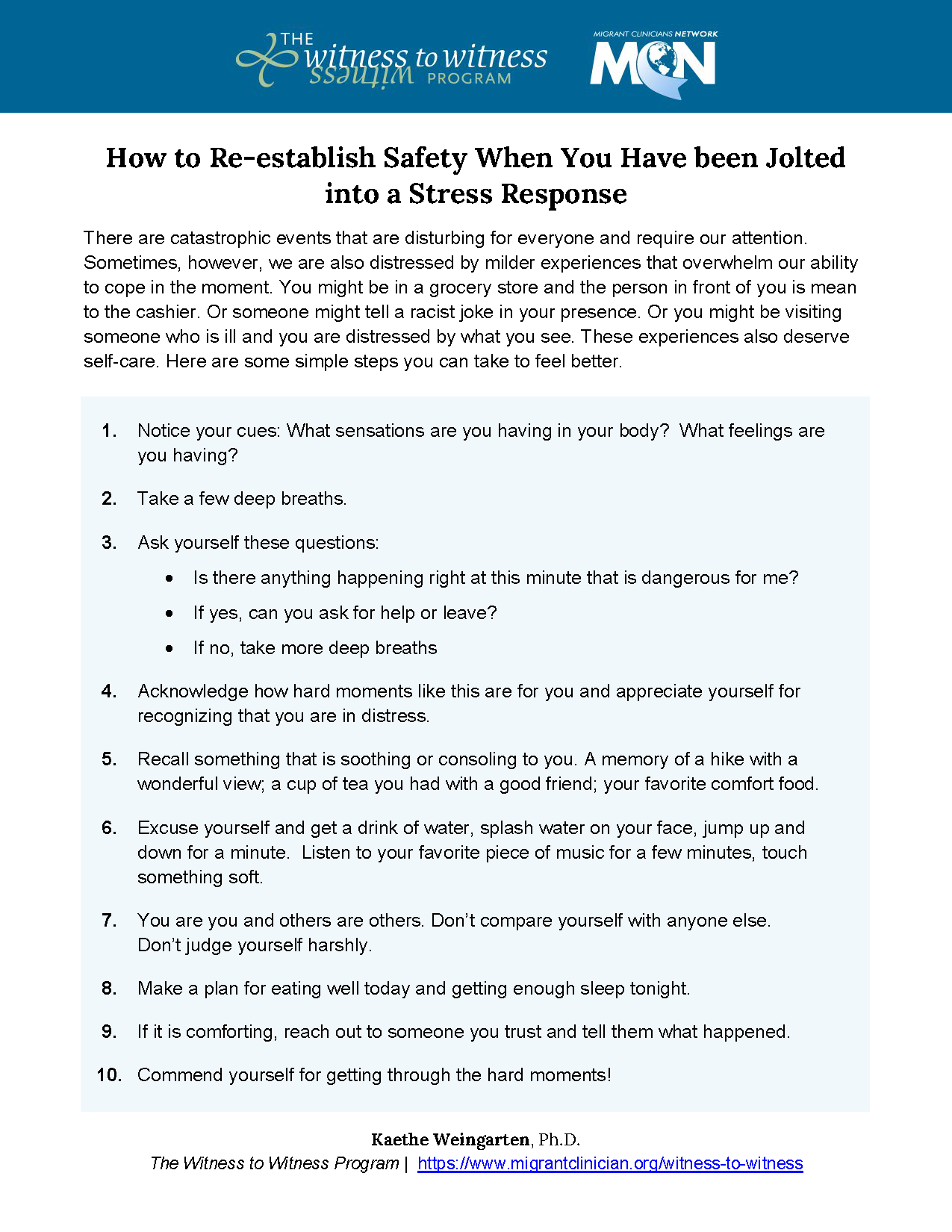

Download Resource
Download Resource
- A DAILY PRACTICE TO RESTORE EQUANIMITY.pdf (60.07 KB)

Este publicación fue respaldado por la Administración de Servicios y Recursos de Salud (HRSA por su sigla en inglés), del Departamento de Salud y Servicios Humanos (HHS por su sigla en inglés), como parte de financiamiento por un total de $2,310,460 con 0 porcentaje financiado con fuentes no gubernamentales. Los contenidos pertenecen a los autores y no representan necesariamente los puntos de vista oficiales ni el respaldo de HRSA, HHS, o el gobierno de los EE.UU. Para obtener más información, visite HRSA.gov.
El calendario ofrece información simple y sencilla en español sobre las vacunas y algo de información sobre por qué los adultos también necesitan vacunas. Está disponible en alta resolución para descargar e imprimir en tamaño póster.
Download Resource
- Los-grandes-tambien-se-vacunan_Calendario_2024-3-7_imprimir.pdf (53.41 MB)
- Los-grandes-tambien-se-vacunan_Calendario_2024-3-7_digital.pdf (603.02 KB)
- 2024-5-9_Los-grandes-tambien-se-vacunan_calendario_Plantilla.pdf (50.06 MB)
- Adults-Get-Vaccinated-Too_Calendar_2024-3-12_Digital.pdf (601.42 KB)
- Adults-Get-Vaccinated-Too_Calendar_2024-3-12_Print.pdf (25.06 MB)
- 2024-5-9_Adults-Get-Vaccinated-Too-Calendar_Template.pdf (50.52 MB)
This guide is intended to support new and existing community health center program grantees in the State of California to successfully navigate through their unique and complex environment, particularly in regards to financial and operational processes at both the state and federal levels. Offered for free on the California Primary Care Association Store.
"HITEQ developed a series of eLearning modules for new staff that focus on Health IT and the Triple Aim, but provide a good deal of health center context as well:"
- Staff Orientation to the use of Health Information Technology (HIT) to achieve the Triple Aim - Part I
- Staff Orientation to the use of Health Information Technology (HIT) to achieve the Triple Aim - Part II
- Staff Orientation to the use of Health Information Technology (HIT) to achieve the Triple Aim - Part III
Links
- https://hiteqcenter.org/Resources/HITEQ-Resources/staff-orientation-to-the-use-of-health-information-technology-hit-to-achieve-the-triple-aim-part-i-2
- https://hiteqcenter.org/Resources/HITEQ-Resources/staff-orientation-to-the-use-of-health-information-technology-hit-to-achieve-the-triple-aim-part-ii-3
- https://hiteqcenter.org/Resources/HITEQ-Resources/staff-orientation-to-the-use-of-health-information-technology-hit-to-achieve-the-triple-aim-part-iii-3
Application Deadline: 04/15/2018 at 5 pm CST
The Underserved Occupational Populations Section of ACOEM is sponsoring one $1,000 scholarship to qualified residents and medical students interested in making significant contributions to the field of underserved occupational medicine.The scholarship was established in honor of Joseph A. Fortuna, MD, FACOEM who founded the Underserved Occupational Populations Section of ACOEM and who was a tireless supporter of underserved workers and their families.
Download Resource
- JAF Memorial Scholarship to AOHC.3.pdf (284.44 KB)
"The Global Report on Internal Displacement presents the latest information on internal displacement worldwide caused by conflict, violence and disasters."
"These materials are designed to be simple and useful in helping physicians and health-care professionals to meet the needs of their patients who may be undocumented or suffering stresses related to close family or community members being undocumented. While there are many toolkits being developed, we hope that these materials might be very easy to use and enable the physician or other health-care professional to address the most immediate needs of such patients."
Offers basic screening questions, common occupations and ailments associated with them, as well as recommended treatment. Also includes sample letters from clinicians to employers for restricted work.
This resource offers training for community based organizations and workers in the aftermath of natural disasters. It includes educational materials as well as trainer guides and tools.
Blog post from the U.S. Department of Labor highlighting common hazards during hurricane cleanup as well as links to additional readings.
Information on keeping food and water safe for consumption and best hygiene practices in the face of disasters.
Offers tips about potential hazards and protective strategies during disaster cleanup.
This page highlights important tools for clinicians as well as diagnoses to consider when caring for disaster-affected patients.
United for Puerto Rico is an initiative brought forth by the First Lady of Puerto Rico, Beatriz Rosselló, in collaboration with the private sector, with the purpose of providing aid and support to those affected in Puerto Rico by the passage of Hurricane Irma and Hurricane María. 100% of the proceeds will go to helping the victims afteced by these natural disasters in Puerto Rico.
This site includes various helpful links including information on health hazards, mold remediation, respirator use, and related policy information.
Comprehensive flood information including links to preparedness and response/recovery pages.
Comprehensive hurricane information including links to preparedness and response/recovery pages.
"To assist health centers in obtaining Federal Emergency Management Agency (FEMA) funding for damaged or destroyed facilities, Capital Link has developed Hurricane Recovery Resources for Health Centers, supported by the Health Resources and Services Administration."
"The Human Diagnosis Project (also referred to as "Human Dx" or "the Project") is a worldwide effort created with and led by the global medical community to build an online system that maps the best steps to help any patient. By combining collective intelligence with machine learning, Human Dx intends to enable more accurate, affordable, and accessible care for all."
Links
A resource by the CDC highlighting the symptoms and signs of carbon monoxide poisoning, which is often a cause of illness and death after a natural disaster.
"Carbon monoxide (CO) is an odorless, colorless, poisonous gas that can cause sudden illness and death if present in sufficient concentration in the ambient air. When power outages occur during emergencies such as hurricanes or winter storms, the use of alternative sources of fuel or electricity for heating, cooling, or cooking can cause CO to build up in a home, garage, or camper and poison the people and animals inside." - CDC
Safety and Health Practices
for Nail Salon Workers
Safety and Health Practicesfor Nail Salon Workers and a Training Guide for Nail Salon Worker Safety and Health Outreach Program
Download Resource
- Best_Practices_HOPE.pdf (230 KB)
- Trainer_Guide_HOPE.pdf (1.34 MB)

DATE: May 24, 2017, 1 pm (ET)
SPEAKERS: Juliana Simmons, MSPH, CHES
Continuing Education Credit
To receive CME* or CNE credit after viewing this webinar, you must:
- Complete the Participant Evaluation associated with this webinar
- Send an email with your first and last name stating which webinar you completed to contedu@migrantclinician.org
Description
José Navarro was excited for his new career after landing a job in the poultry industry. After five years on the job, 37 year-old Navarro began coughing up blood. He died soon after when his lungs and kidneys failed. His death triggered a federal investigation raising questions about the health risks associated with the use of toxic chemicals in poultry plants.
Millions of workers are exposed to chemicals everyday on the job. All workers have the right to know about the chemicals they work with and community health workers can be an important source of information and support for workers. This workshop will teach community health workers how to explain what happens when someone is exposed to chemicals and how workers can best protect themselves
Learning Objectives
- Recognize how workers become exposed to chemicals and illnesses
- Describe basic safety practices when working around chemicals
- Understand the role of community health workers in identifying and preventing work related illnesses and hazards
This project is supported by the Health Resources and Services Administration (HRSA) of the U.S. Department of Health and Human Services (HHS) under cooperative agreement number U30CS09742, Technical Assistance to Community and Migrant Health Centers and Homeless for $1,094,709.00 with 0% of the total NCA project financed with non-federal sources. This information or content and conclusions are those of the author and should not be construed as the official position or policy of, nor should any endorsements be inferred by HRSA, HHS or the U.S. Government.
This 90-minute webinar was created for physicians, nurses, and other health professionals who treat and case manage patients with active TB. The webinar introduced the 2016 Official American Thoracic Society/Centers for Disease Control and Prevention/Infectious Diseases Society of America Clinical Practice Guidelines: Treatment of Drug-Susceptible Tuberculosis. This training highlighted the guidelines development process, the key changes in recommendations, and discussed the evidence supporting the changes. The webinar was originally presented on November 4, 2016. This training was jointly sponsored by all 5 RTMCCs.




